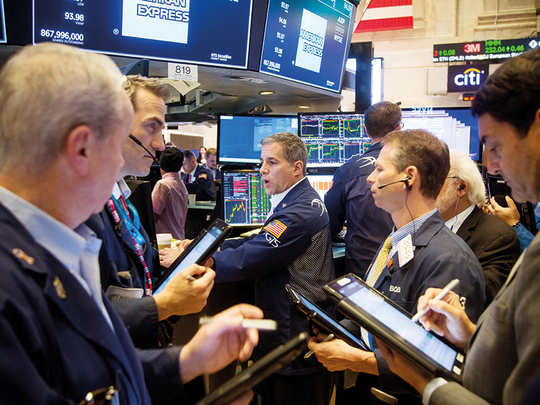
Tokyo
A prolonged bull market across stocks, bonds and credit has left a measure of average valuation at the highest since 1900, a condition that at some point is going to translate into pain for investors, according to Goldman Sachs Group Inc.
“It has seldom been the case that equities, bonds and credit have been similarly expensive at the same time, only in the Roaring ‘20s and the Golden ‘50s,” Goldman Sachs International strategists including Christian Mueller-Glissman wrote in a note this week. “All good things must come to an end” and “there will be a bear market, eventually” they said.
As central banks cut back their quantitative easing, pushing up the premiums investors demand to hold longer-dated bonds, returns are “likely to be lower across assets” over the medium term, the analysts said. A second, less likely, scenario would involve “fast pain.” Stock and bond valuations would both get hit, with the mix depending on whether the trigger involved a negative growth shock, or a growth shock alongside an inflation pickup.
“Elevated valuations increase the risk of drawdowns for the simple reason that there is less buffer to absorb shocks,” the strategists wrote. “The average valuation percentile across equity, bonds and credit in the US is 90 per cent, an all-time high.”
A portfolio of 60 per cent S&P 500 Index stocks and 40 per cent 10-year US Treasuries generated a 7.1 per cent inflation-adjusted return since 1985, Goldman calculated — compared with 4.8 per cent over the last century. The tech-bubble implosion and global financial crisis were the two taints to the record.
Low inflation has prevailed in the current period, just as it did alongside economic growth in the 1920s and 1950s, according to the Goldman report. “The worst outcome for 60/40 portfolios is high and rising inflation, which is when both bonds and equities suffer, even outside recessions.” An increase in policy rates triggered by price pressures “remains a key risk for multi-asset portfolios. Duration risk in bond markets is much higher this cycle,” they wrote.
In the Goldman strategists’ main scenario of lower but positive returns, investors should “stay invested and could even be lured to lever up.” They suggested putting more in equities, with their greater risk-adjusted returns, and scaling back duration in fixed income.












